Medieval pottery and well found as work on new museum continues
This article contains affiliate links. We may earn a small commission on items purchased through this article, but that does not affect our editorial judgement.
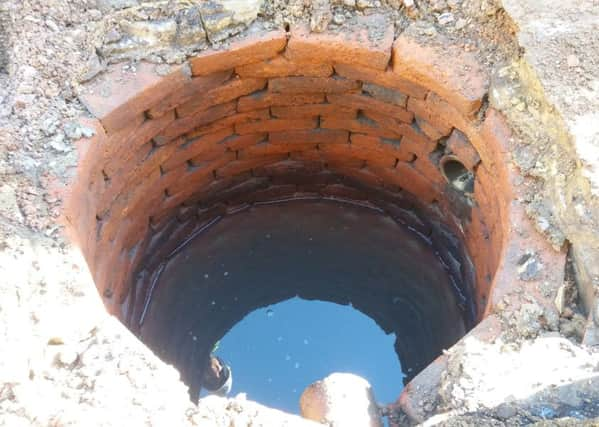

Its new home – The Tree – on the corner of London Road and The Boulevard, dates back to the 13th century. But some of the pottery found during the renovation of the building dates back even further into the medieval period.
Work at The Tree is scheduled to finish in September and, once the building has been fitted out, the museum will open early in 2017.
Advertisement
Hide AdAdvertisement
Hide AdOf all the exhibits waiting to take their place, arguably the most impressive will be the building itself – and the work being carried out to preserve and restore it has been fascinating.
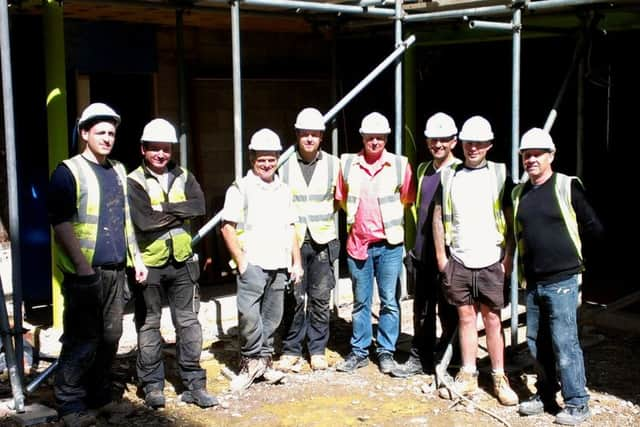

The contract for the work was given to Stoneham Construction after its team completed a heritage project in Ryde, on the Isle of Wight.
Site manager Mark Wheeler described how one of the biggest changes people would notice would be the demolition of one of the chimneys. He said: “The chimney is of no historical value whatsoever. It was a later addition which was added on with a Victorian section of the building, which we demolished.
“The chimney was deemed unsafe. It’s not physically attached to the building anyway, so we’re dropping it. We’re taking it down and then putting the front of the building back as it should be.”
The demolition work is scheduled to begin this week.
Advertisement
Hide AdAdvertisement
Hide Ad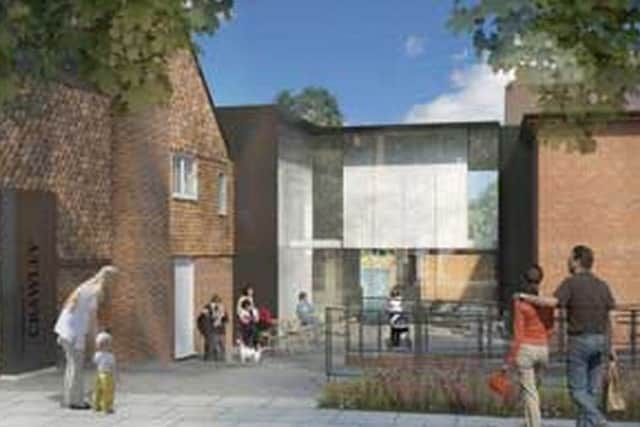

Another big change will be the erection of a glass link between The Tree and its annexe – and the preparation work uncovered some fascinating historical finds.
The first was a haul of pottery, some of which is believed to date back to early medieval times, before The Tree was built. It will be cleaned up and exhibited in the museum.
The second find was a well, that had been sealed several metres down and the hole covered by a large stone.
Crawley Borough Council surveyor, Keith Jarosinski, said it was initially feared the well would have to be filled in to prevent it collapsing when the foundations for the glass link was built. But the workmanship had been so good the well was still sound, so it was re-covered and left alone.
Advertisement
Hide AdAdvertisement
Hide Ad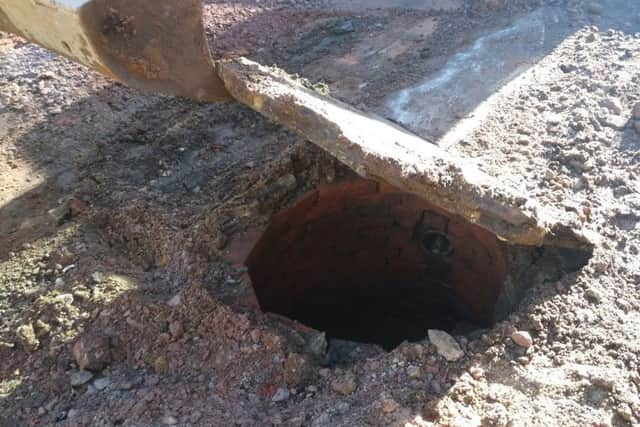

Inside the building, the focus has been on restoring it to its former glory, using traditional building methods.
One task will see the rebuilding of the ceilings, which had been levelled out using plasterboard. With the boards removed, it was possible to see the original lath and plaster ceiling and the next job will be to use traditional methods to restore it.
A specialist plasterer will fix hundreds of laths – thin pieces of thin strips of wood only a few inches wide – to the timbers and then cover the whole ceiling with layers of lime plaster.
Mark said: “There will be at least two days fitting all these laths, which were saved from another part of the building.
Advertisement
Hide AdAdvertisement
Hide Ad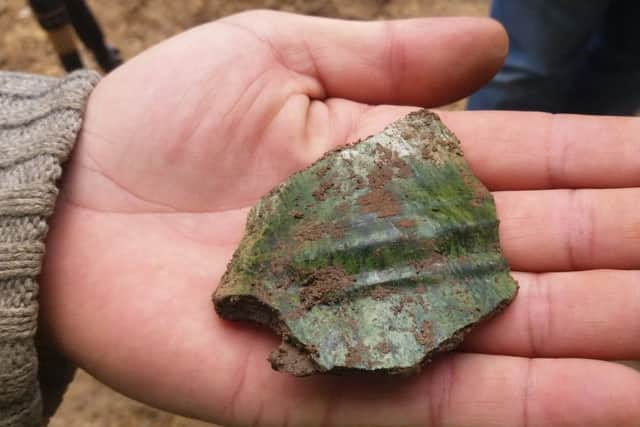

“Then there’s several coats of lime plaster put on, which he has to wait two weeks in between each coat for it to dry. When the first coat goes on we can’t walk around upstairs because it will drop the plaster off the lath.”
After all that work, visitors to the museum will see what appears to be a rather quirky, misshapen ceiling – which is exactly what the project’s historical consultant wants. Taking away the 20th century changes and showing people what a Tudor building would have looked like.
Another 20th century change being removed are the layers of lining paper which cover the interior walls. Beneath them is a lime plaster wash covering a wattle and daub interior. Over the centuries, patches of the wattle – woven wooden sticks – has deteriorated and will need to be rebuilt. Perhaps the most fascinating fact about that particular job will be the daub – the equivalent of Tudor plaster – which will be reused.
Mark said: “When the traditional plasterer comes to redo all this, interestingly, he can reuse the daub. He can reconstitute it, wet it and it comes back to life again. We’ll be able to put the original Tudor daub back in to the building rather than take it all away. It’s hundreds of years old and we can put it back.”
Advertisement
Hide AdAdvertisement
Hide AdThere are only a few months left until the museum is opened. When you go in, be sure to admire the building around you – it’s one of a kind.
Museum Society’s delight as its new home develops
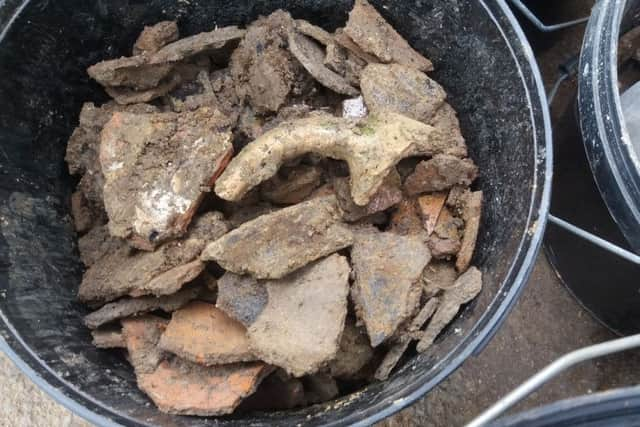

Crawley Museum Society has been admiring the work being carried out to build its new home.
Museum curator Helen Poole said: “It is such a pleasure to see some of the less attractive features carefully stripped away to reveal the splendours of the original building work, both medieval and Victorian. The conversion of the annexe and the creation of the new Link will give us a great deal of scope to expand what we can do for the public, and its location will be such a bonus.
“I’m delighted with the work so far. The Stoneham team at The Tree are almost as passionate about the whole conversion as we are and are using their considerable experience of historic buildings to full effect.” She added: “The most recent stamp of approval came when we discovered that a bird has just made its nest in an appropriate nook on the first floor!”
Advertisement
Hide AdAdvertisement
Hide AdThe society if looking for volunteers to help it set up and move in to the museum once the work is finished. For details, log on to www.crawleymuseums.org .
The house built when Longshanks was King
The first written mention of Crawley came in 1202-3, when Michael de Poynings received a licence from King John to hold a weekly market at his manor.
The Tree probably wasn’t around then. Estimates date its oldest part to around 1280, meaning it was built during the reign of King Edward I – known as Edward Longshanks.
Next time some one tells you Crawley is a new town, imagine the historical events that have passed since that one little building was erected.
Advertisement
Hide AdAdvertisement
Hide AdIt was almost 20 years old when Marco Polo published his tales of China, and William Wallace emerged as leader of the Scottish resistance to England.
It was 100 years old when the Bible was translated into English, and was more than 200 years old when the War of the Roses ended.
The people who walked its corridors would have spoken about the likes of Henry VIII and Elizabeth I.
It saw the Industrial Revolution, the birth of the car, the aeroplane and space flight.
Advertisement
Hide AdAdvertisement
Hide AdAnd, with this new lease of life, it will hopefully see in its 1,000th birthday long after you and I are gone.
Don’t miss out on all the latest breaking news where you live.
Here are four ways you can be sure you’ll be amongst the first to know what’s going on.
1) Make our website your homepage at www.crawleyobserver.co.uk
Advertisement
Hide AdAdvertisement
Hide Ad2) Like our Facebook page at www.facebook.com/crawleyobserver
3) Follow us on Twitter @Crawley_Obby
4) Register with us by clicking on ‘sign in’ (top right corner). You can then receive our daily newsletter AND add your point of view to stories that you read here.
And do share with your family and friends - so they don’t miss out!
The Crawley Observer - always the first with your local news.
Be part of it.